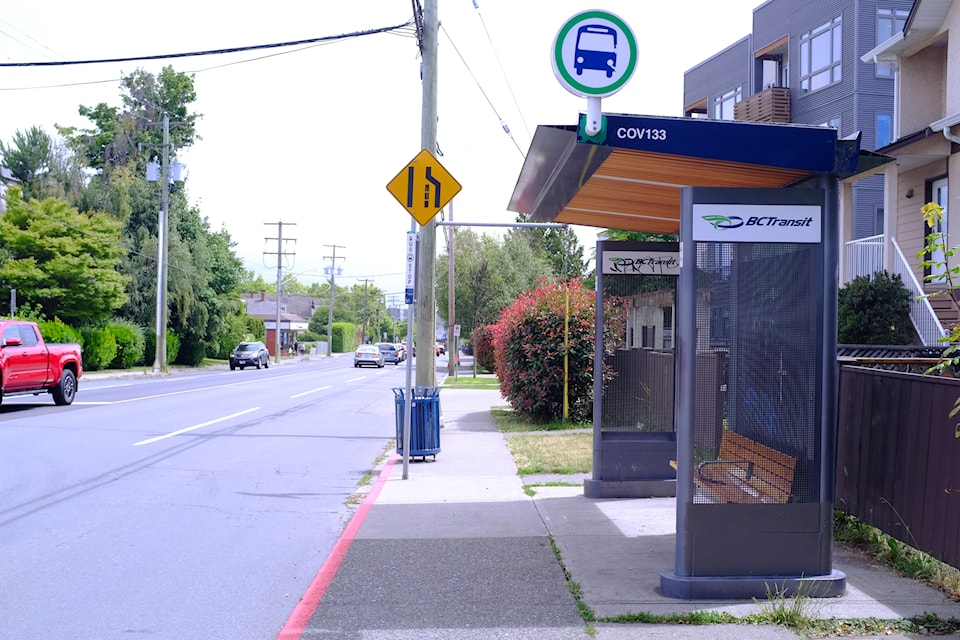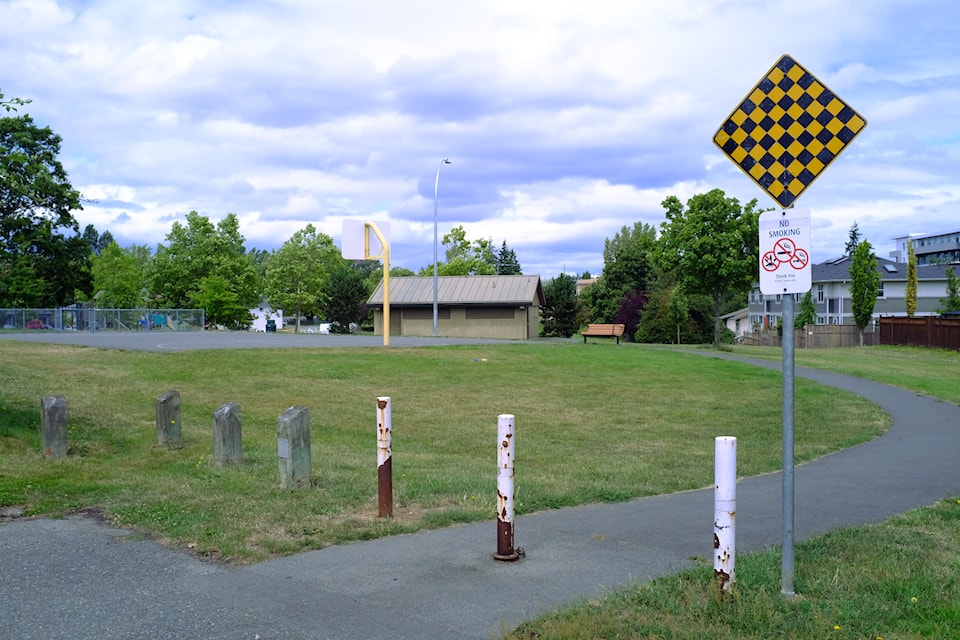Nearly a decade ago, Sarah Tessier moved to Saanich with her young family.
Living on Burnside Road East, near the Victoria border, she quickly came to enjoy the neighbourhood, from daily evening walks with her dog to regular trips to Rudd Park, where her kids could burn off some energy at the playground.
But the quiet, welcoming neighbourhood she once loved, she said, has slowly changed in recent years due to “escalating drug use” and public disorder.
“Since COVID, there just seemed to be a lot more people roaming around the neighbourhood… pushing shopping carts and doing drugs blatantly down at the park,” she said.
Tessier, however, said conditions have worsened since the start of the year, citing a rise in littering, loitering, and vandalism – issues she says she witnesses on a "near-daily basis."

Tessier says she has also seen people trespassing on her property, with several incidents of theft, including a doormat, chairs, pillows, patio table, and even a break-in of her camper.
With both Saanich Police Department's non-emergency and emergency lines on speed dial, Tessier said she calls local authorities “almost every day” to report incidents ranging from potential illegal activities to individuals experiencing mental health crisis at the bus stop across from her property.
Over time, the mother explained that the situation has taken a toll on her own mental health.
“It affects your sleep and the way that you feel about where you live,” she said. “Five years ago, you could (have a) daily routine of going out for walks and to the park, but now it feels unsafe.”
Despite discussing the situation with Saanich Police staff, she said the problems remain unresolved.
“Everybody's afraid of what's happening,” she said, “And it doesn't seem like the police have the ability to take any action."
Feeling “ashamed” of what her community has become, Tessier sent a letter to both council and Saanich Police, expressing her “deep frustration” as well as demanding a “coordinated plan to address ongoing open drug use and disorderly behaviour” in the neighbourhood.
“I feel really frustrated, angry and a huge amount of confusion about what to do,” she said. “It seems like there's no solution, and nobody has a solution.”
In a written statement to Saanich News, Mayor Dean Murdock said he is committed to collaborating with local, provincial and federal law enforcement agencies to address the concerns of Saanich residents.
“Public safety is a top priority at the district, and we encourage residents to take an active role in this issue by engaging with their neighbours and neighbourhood groups, reporting suspicious activities, and participating in the many amazing community programs aimed at enhancing the safety of residents,” reads his statement.
Saanich Police Insp. Andy Stuart told Saanich News that internal data presents a different picture than the one described by Tessier.
“Statistically, we're not seeing an increase (in illegal activities),” he said. “However, when I speak to people in the community, their perception and their lived experience can definitely feel that way.”
Stuart added that part of the discrepancy may come from underreporting, as some people don’t always inform police when incidents occur.
“We always ask that members of the public, if they see something happening that's a criminal act or if they don't feel safe in their community, to call the police non-emergency number, or emergency if required, and police will always attend for that,” he said.
To “have an accurate assessment of where crime trends are happening,” Stuart emphasized the importance of reporting illegal activities, so that calls can become files, files become statistics, and those statistics reflect broader trends in the municipality.
In parallel, recent figures from Statistics Canada’s annual report show police-reported crime is down in Saanich.
Published on July 22, the report shows the district’s crime rate dropped nearly 16 per cent last year compared to 2023, with total incidents falling from 4,881 to 4,138.
Overall, the report notes crime in Saanich has been on a downward trend over the past five years.
While Stuart couldn’t comment specifically on Tessier’s situation, he noted police response and availability can vary depending on the priority, severity, and resources available at the time of the call.
“There might be times where (residents) feel something happened and the police don't respond, and it does happen sometimes,” he said. “When you do have a public disorder situation, it won't have the same level of response in time due to other priorities, (including) life and injury type (calls), before some disorderly neighbourhood stuff.”
Amid rising homelessness and drug use nationwide, the inspector acknowledged that limited resources also play a role in how effectively police can respond to complex situations like the one at hand.
“Illegal drug use and people experiencing homelessness are major social issues that the police have a very limited ability to directly affect in terms of changing those issues,” he said. “But the police are left responsible for ensuring that the community is safe and any unintended consequences that happen because of illegal drug use.”
That said, Stuart emphasized that he and his staff are committed to following up on any resident complaints about police services or their experiences.
While Tessier recognizes the complexity of the ongoing opioid crisis, she remains committed to staying in Saanich and continues to call on both politicians and police to take action.
“We need to have some action plan so we can understand that there is a light at the end of the tunnel,” she said. “We need more communication.”


